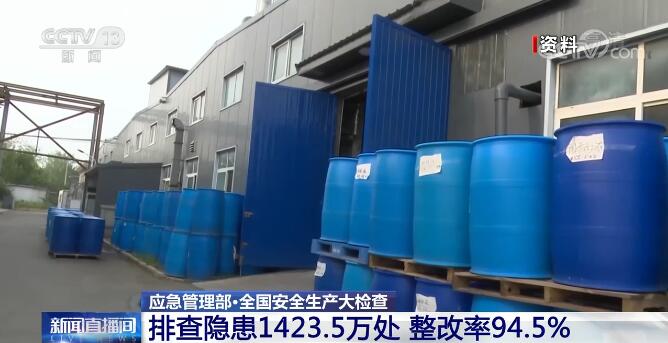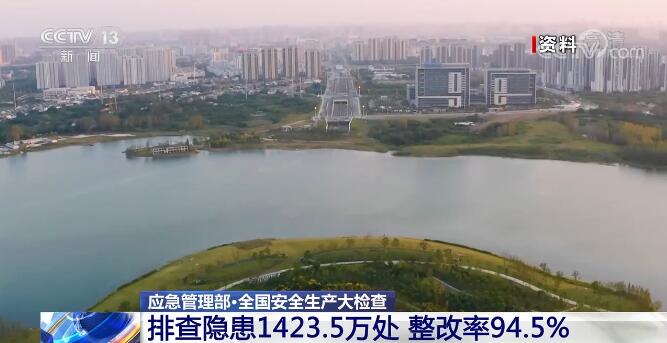From October 26th to 29th, the Fifth Plenary Session of the 19th CPC Central Committee was held in Beijing. As an important topic, the meeting will consider the Central Committee of the Communist Party of China’s proposal to formulate the 14th Five-Year Plan for national economic and social development and the long-term goal in 2035, so as to draw a blueprint for the development of China in the next five or even fifteen years.
The "Fourteenth Five-Year Plan" period is the first five years to start a new journey of building a socialist modern country in an all-round way and March towards the goal of the second century. In the process of China’s overall modernization, it occupies an important historical position as a link between the past and the future.
Looking forward to the 14th Five-Year Plan, many experts have analyzed that the GDP growth target will be further diluted, and the new development pattern of "double cycle" will guide the economic development of China in the next five years. With large domestic demand as the platform, it will further expand the opening up, accelerate the reform of household registration system and promote urbanization, and make new breakthroughs in key areas such as factor marketization and state-owned enterprises.
Desalinate GDP growth target
Since 1953, China has formulated and implemented thirteen five-year plans. This year is the closing year of the 13th Five-Year Plan and the layout year of the 14th Five-Year Plan.
In the past five years, China’s economic strength, scientific and technological strength and comprehensive national strength have leapt to a new level, with the total economic output approaching 100 trillion yuan and the per capita GDP reaching 10,000 US dollars. The main indicators of the 13 th Five-Year Plan will be achieved as scheduled, and major strategic tasks and 165 major engineering projects will be fully effective. With the world’s largest middle-income group and hundreds of millions of market players, generate, China’s economic vitality, people’s sense of acquisition, happiness and security has been continuously enhanced.
At the beginning of this year, the sudden COVID-19 epidemic had an impact on China’s economy. The China Municipal Government has made overall plans for epidemic prevention and control and economic and social development, and introduced some powerful macro-control policies. In this year’s government work report, there is no specific target of GDP growth rate, mainly because the global epidemic situation and the economic and trade situation are very uncertain, and China’s development faces some unpredictable factors.
Today, China’s economic growth rate turned positive in the first three quarters of this year, taking the lead in recovery among the major economies in the world. China’s economy has shown great resilience and vitality. The International Monetary Fund predicts that the global economy will shrink by 4.4% this year, and China will be the only major economy in the world to achieve positive growth.
Zhang Liqun, a researcher in the Macroeconomic Research Department of the State Council Development Research Center, wrote an article analyzing that a very important issue to be considered in the "14th Five-Year Plan" is to reasonably determine the economic growth target of China. We must scientifically judge the current development stage of China’s economy and accurately judge the potential growth rate of China’s economy, so as to correctly determine the growth target and corresponding growth rate of China’s economy during the Tenth Five-Year Plan period.
Wang Jun, a member of the Academic Committee of China International Economic Exchange Center, told CBN that in the face of the continuous downward trend of the potential economic growth rate and the high uncertainty of the global economy under the impact of the epidemic, the central probability of China’s economic growth will further decline, and the uncertainty or further dilution of the GDP growth target will help the whole society to implement the new development concept and shift its focus to more important aspects such as promoting high-quality development and adjusting and optimizing the economic structure.
Wang Tao, chief economist of UBS Securities in China, also believes that the GDP growth target is expected to be lowered, paying more attention to economic rebalancing and development quality. Compared with the average annual real GDP growth target of "above 6.5%" set in the 13th Five-Year Plan, it is expected that the 14th Five-Year Plan may significantly dilute the economic growth target.

Promote the "double cycle"
The "double cycle" strategy has been emphasized many times in this year’s high-level meeting. The Standing Committee of the Political Bureau of the Communist Party of China Central Committee meeting of the Communist Party of China held on May 14th put forward for the first time "to build a new development pattern of mutual promotion of domestic and international double circulation". The industry expects that the double-cycle strategy will run through the "14th Five-Year Plan" and become the main line of China’s long-term economic development.
Wang Tao said that the "double cycle" new development pattern will guide the economic development of China in the next five years, and many policies to boost domestic demand and open to the outside world will be integrated and accelerated under this theme, including promoting new urbanization and infrastructure construction, supporting the development of small and medium-sized enterprises, and improving the social security system.
According to CICC’s estimation, China’s total economic output accounts for nearly 20% of the world’s total, and its per capita GDP level may exceed that of the world around 2023. No matter from the economic aggregate or the unit level, it is difficult for China’s growth to be driven solely by the outside, but it must pay more attention to domestic demand and consumption potential than at any time since the reform and opening up.
Kuang Xianming, director of the Economic Research Institute of China (Hainan) Reform and Development Research Institute, said that the trend of economic transformation and upgrading of 1.4 billion people has great potential and has become an important foundation of the double cycle. If the proportion of urban and rural residents’ service consumption can be increased to 60%, it will bring about 10 trillion yuan of new consumption; If the integration of urban and rural areas can be effectively broken through, the urbanization rate of registered population will be significantly improved, which will bring investment and consumption demand of 10 trillion yuan. As long as this domestic demand potential is continuously released, it can become an important driving force for the international cycle.
China’s diversified and multi-level domestic demand cannot be satisfied by its own supply, and the internal industrial upgrading also needs external competition and incentives. In the "14th Five-Year Plan", it may also be a high-probability measure to further open up and promote the external circulation of commodities, capital, talents and other elements on the platform of large domestic demand.
Citic Securities pointed out that the new pattern of "double circulation" will tap the potential of domestic factors and domestic demand market, promote the development of domestic metropolitan area, consolidate industrial chain and upgrade consumption, and participate in the international market with a higher level of openness. Promoting "double cycle" with "domestic great cycle" includes not only the real economy cycle, but also the capital market cycle, and the capital market cycle has greater space and potential for construction and development in China.
CICC also believes that China’s economic transformation and structural upgrading rely more on direct financing, and China needs to promote the integration of domestic and foreign capital more closely to solve external challenges. Therefore, it is necessary to further develop the capital market to become an important hub of the "great domestic cycle", further open the capital account to promote the two-way flow of capital and invigorate the "external cycle".
Accelerate the reform of household registration system and promote urbanization
Urbanization has become an important driving force for China’s economic stability. Since the reform and opening up, China’s growth model is mainly driven by factor input and efficiency improvement. The factor input drive is mainly accompanied by the rapid growth of domestic urbanization and industrialization demand and the continuous expansion of external demand, and the rapid increase of capital, labor, land and other factor inputs, especially the increase of non-agricultural labor represented by the transfer of labor from rural areas to cities, which provides important support for industrial development.
In 2019, the urbanization rate in the eastern region of China was 68.5%, and the urbanization rates in the central and western regions were 56.8% and 54.1% respectively, and even some places had not reached 50%. With the implementation of the great domestic circular strategy, the urbanization rate in the central and western regions will further increase, and it will make a major contribution to the improvement of urbanization rate in China in the future.
How will urbanization develop and advance during the 14 th Five-Year Plan period? Wang Yiming, member of Chinese People’s Political Consultative Conference and secretary-general of the National Development Planning Expert Committee of the 14th Five-Year Plan, said recently that it is the primary requirement to speed up the urbanization of agricultural transfer population, because it is necessary to ensure the continuous expansion and upgrading of domestic consumption in order to take the domestic cycle as the main body, and to transform nearly 270 million migrant workers into citizens can quickly release their consumption potential, which is of great significance to expanding consumption. At present, migrant workers in China have accounted for nearly 70% of the employed population in cities and towns. If migrant workers can spend like urban residents after becoming citizens, the per capita consumption expenditure in China will increase by 27%.
To achieve this goal, we need to speed up the reform of the household registration system. Wang Yiming pointed out that the gap between the urbanization rate of permanent residents and the urbanization rate of registered population is very limited. It is very important to relax the restrictions on settlement except in megacities, especially the equalization of basic public services, and link it with the permanent population rather than the registered population. The core of double circulation is to get through the obstruction of two-way flow of urban and rural factors, not one-way flow of urban and rural areas.
Zhang Liqun believes that urban construction and development activities during the Tenth Five-Year Plan period will increasingly show more and more new features and new features in terms of long-term scientific planning, overall functions and mutual coordination, long-term infrastructure and public service capacity building, urban democratic and legal environment construction, and natural and ecological environment protection. Urbanization will enter a new historical period in which people’s survival and development level will be comprehensively improved and their ability of sustainable development will be continuously enhanced.
Reform in key areas needs to be broken through
During the "Thirteenth Five-Year Plan" period, the supply-side structural reform has gone deep into the level of property rights system and factor market development, indicating that the exploration and practice of Socialism with Chinese characteristics’s market economic system has entered a deep-seated key link.
Zhang Liqun analyzed that the reform during the 14th Five-Year Plan period will go deep into the fields of property right system construction and factor market development. The institutional changes promoted by the reform during the "14th Five-Year Plan" period will be more manifested and consolidated at the level of continuous innovation and improvement of the legal system. This will be a new and important feature of reform and opening up.
Specifically, Yang Chengzhang, chief economist of Shenwan Hongyuan Securities, believes that during the "Tenth Five-Year Plan" period, it is necessary to grasp the key points and difficulties of the market-oriented reform of land, manpower, capital, technology and data, accelerate the urban-rural flow of land elements, and improve the intensive level of land use; Establish the market view of human resources as the first resource and improve the entrepreneur market; Promote the optimal allocation of capital elements in the whole society with the securitization capital market; Accelerate the integration of technology property rights trading market and promote the construction of basic system of technology market; Gradually build the basic institutional framework of the data trading market and promote the integration and development of the data market and the capital market.
During the 14th Five-Year Plan period, the reform of state-owned assets and state-owned enterprises will bring new vitality to generate. With the issuance of the three-year action plan for the reform of state-owned enterprises, the three-year action for the reform of state-owned enterprises has been fully launched. Through the implementation of the three-year action, remarkable achievements have been made in forming a more mature and stereotyped modern enterprise system with China characteristics and a state-owned assets supervision system focusing on managing capital, promoting the layout optimization and structural adjustment of the state-owned economy, and improving the vitality and efficiency of state-owned enterprises.
Li Jin, chief researcher of China Enterprise Research Institute, told the First Financial Reporter that the three-year action of state-owned enterprise reform is a concrete construction drawing for implementing the "1+N" policy system and top-level design of state-owned enterprise reform in the next three years, which is measurable, examinable, verifiable and necessary. Doing this work well is of great significance for strengthening and improving the state-owned economy, enhancing the vitality of state-owned enterprises, improving efficiency and accelerating the construction of a new development pattern.
At present, a series of more targeted, operational and precise reform measures will be implemented. The key areas of reform mainly include improving the modern enterprise system with China characteristics, actively and steadily deepening the reform of mixed ownership, accelerating the improvement of market-oriented operating mechanism, improving the supervision system of state-owned assets, and fully releasing and stimulating the vitality of grassroots reform.
Huang Qunhui, director of the Institute of Economics of the Chinese Academy of Social Sciences, wrote that the reform of state-owned enterprises has always been the central link in China’s economic system reform, and feasible reform roadmaps and concrete measures should be taken to make breakthrough progress during the 14 th Five-Year Plan period. State-owned enterprises should grasp the direction of change that has never changed in a hundred years, start with long-term and far-reaching system construction, and promote the formation of a more mature and stereotyped modern enterprise system with China characteristics and a state-owned assets supervision system focusing on managing capital.










